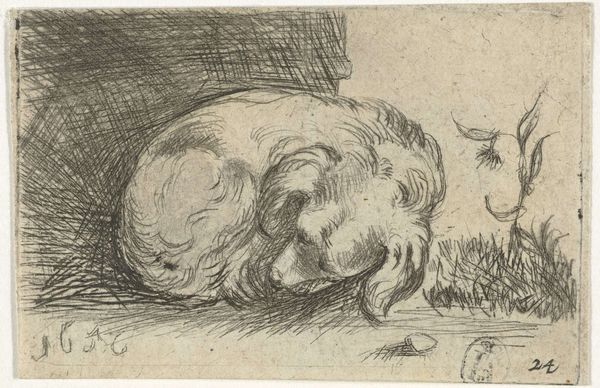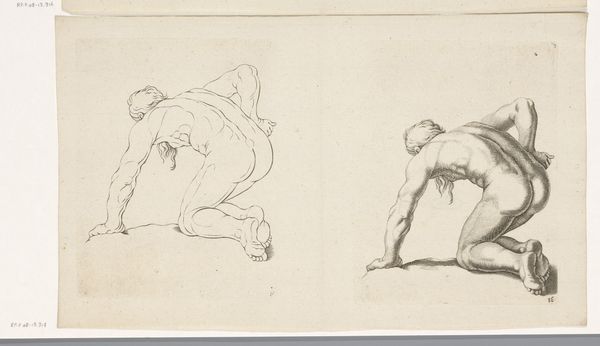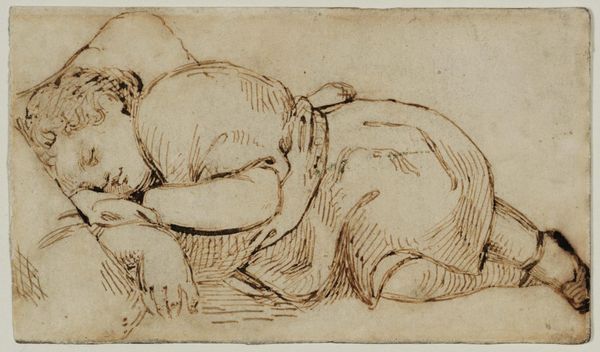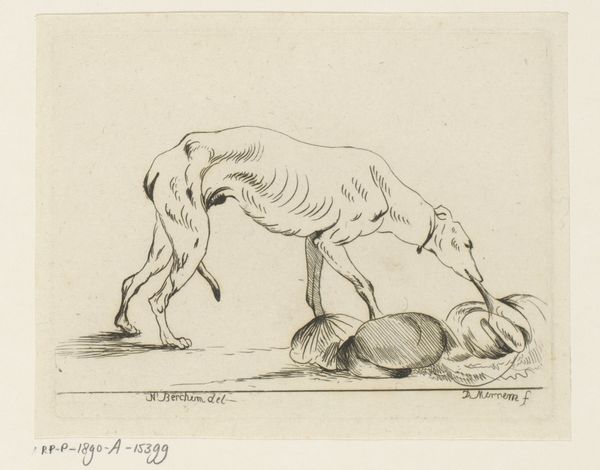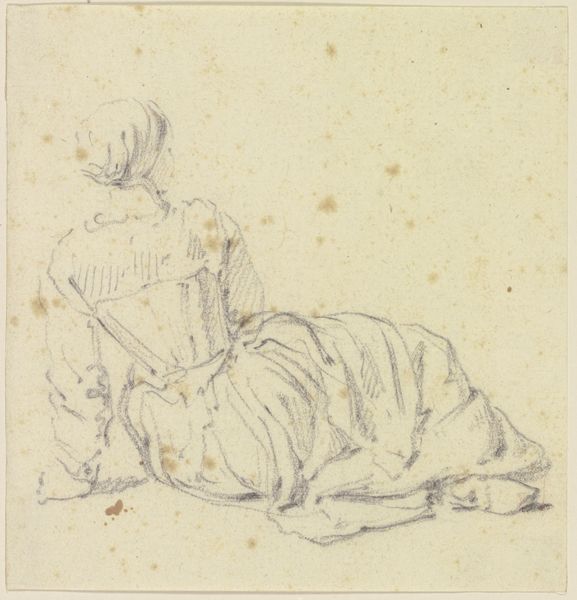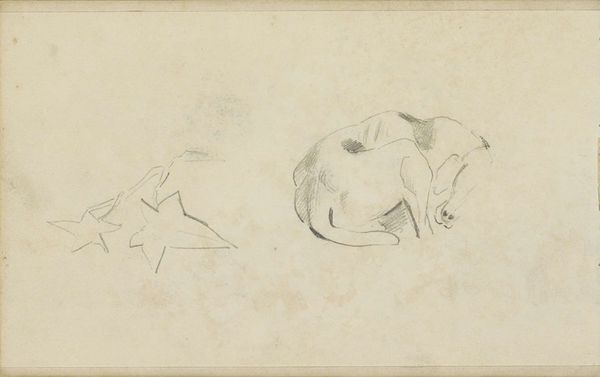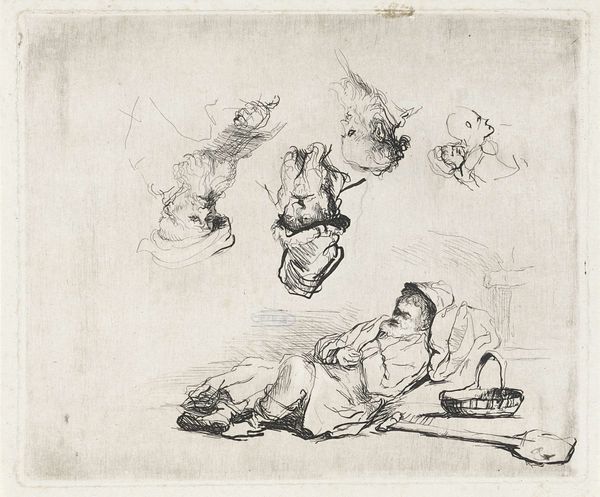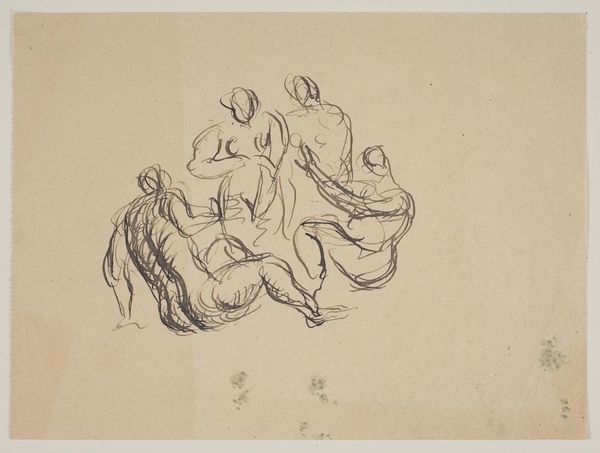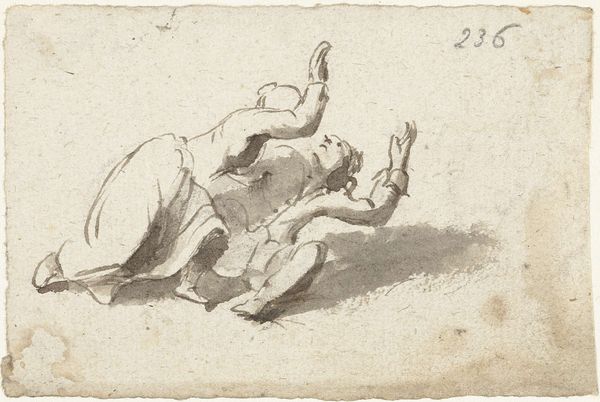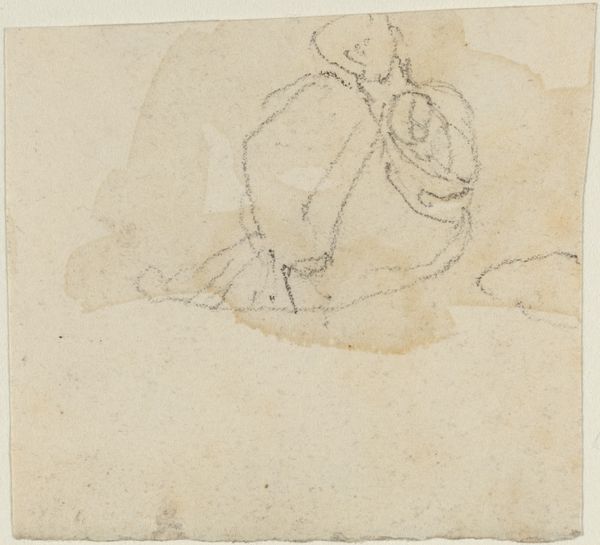
drawing, pencil
#
drawing
#
dutch-golden-age
#
pencil sketch
#
figuration
#
pencil
#
genre-painting
#
realism
Dimensions: height 111 mm, width 199 mm
Copyright: Rijks Museum: Open Domain
Editor: Right, next up is “Two Studies of a Man Defecating” from around the mid-17th century, by Gerard ter Borch II, rendered in pencil on paper. It's a surprisingly intimate and quite humorous sketch. I'm curious, what catches your eye when you look at this piece? Curator: Beyond the subject matter, which already challenges academic traditions by depicting such a common, bodily function, I'm interested in the materiality. Think about the availability and cost of paper and pencils at this time. What did it mean to use these resources on such a subject? Editor: So, it's not just about *what* he’s drawing, but *that* he’s using valuable materials to do it? Curator: Exactly! And how does this change the way we understand the "high" and "low" in art? Ter Borch wasn't creating a grand history painting; he's focused on the everyday, the immediate, almost… crass. But he’s also choosing to preserve this moment through the labor-intensive process of drawing. This raises questions about social class too. Who is he depicting, and what is their relationship to the means of production? Were they part of the emerging middle class with access to different means of labor? Editor: That’s a good point. I hadn't really thought about how the social and economic factors of the time influenced the choice of subject, the materials used, and who could even access artmaking. Curator: Consider how art schools today also shape and filter the 'who', 'what', and 'how'. What’s preserved and taught and, by implication, considered valuable. Editor: It reframes my understanding of value completely. Curator: Mine too. Every time!
Comments
No comments
Be the first to comment and join the conversation on the ultimate creative platform.

